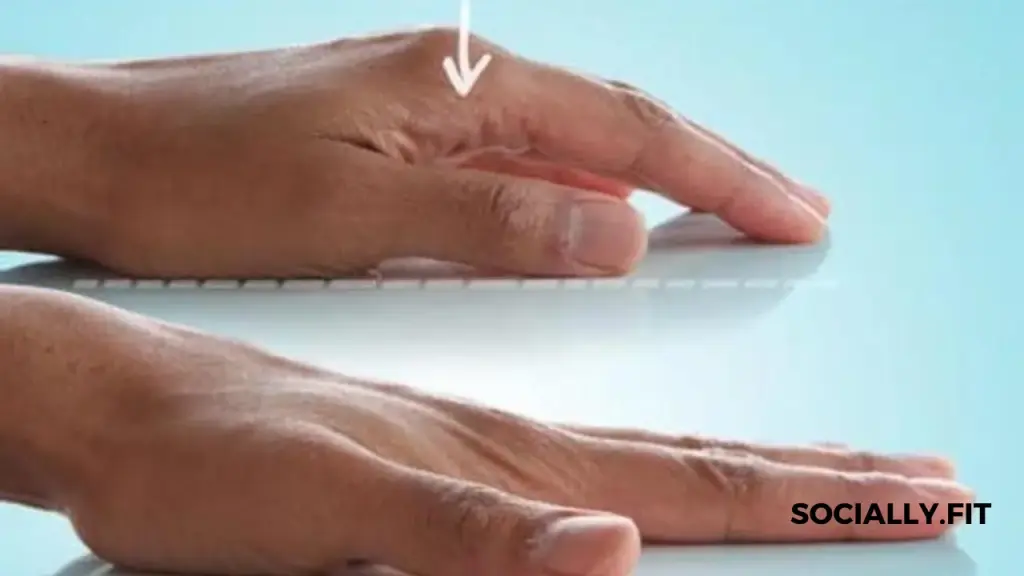Effective Carpal Tunnel Exercises to Relieve Pain and Improve Mobility.
Discover a comprehensive range of proven carpal tunnel exercises designed to alleviate pain, enhance flexibility, and promote wrist health. Learn how simple stretches and strengthening movements can help you find relief and regain function.
Introduction
Carpal Tunnel Syndrome (CTS) is a prevalent condition affecting the hands and wrists, often due to repetitive motions or prolonged use of the hands and fingers. Fortunately, exercises can play a crucial role in managing and alleviating symptoms associated with CTS. This article explores the importance of exercises for CTS and provides a comprehensive guide to effective exercises.
Understanding Carpal Tunnel Syndrome
Carpal Tunnel Syndrome occurs when the median nerve, which runs from the forearm into the hand, becomes compressed or squeezed at the wrist. This compression can lead to numbness, tingling, weakness, or pain in the hand and wrist. Factors such as repetitive hand movements, wrist positioning, and underlying health conditions can contribute to the development of CTS.
Importance of Exercises for Carpal Tunnel Syndrome
Regular exercises can help alleviate symptoms of Carpal Tunnel Syndrome by improving flexibility, strength, and circulation in the affected area. Additionally, exercises can aid in preventing further deterioration and promoting overall wrist health. Incorporating targeted exercises into daily routine can significantly contribute to managing CTS symptoms and improving quality of life.
20 Recommended Carpal Tunnel Exercises
Wrist Flexor Stretch:

1: Extend your right arm in front of you with the palm facing up.
2: With your left hand, gently grasp the fingers of your right hand.
3: Slowly bend your right wrist downward towards the floor until you feel a gentle stretch in the underside of your forearm.
4: Hold the stretch for 15-30 seconds, focusing on breathing deeply and relaxing.
5: Release the stretch and repeat on the left side.
Wrist Extensor Stretch:

1: Extend your right arm in front of you with the palm facing down.
2: Use your left hand to gently press down on the back of your right hand, bending your wrist upward.
3: Continue to apply gentle pressure until you feel a stretch in the top side of your forearm.
4: Hold the stretch for 15-30 seconds, maintaining steady breathing.
5: Release the stretch and repeat on the left side.
Finger Stretch:

1: Extend your right hand in front of you with the palm facing down.
2: Use your left hand to gently pull the fingers of your right hand back towards your wrist.
3: Hold the stretch for a few seconds, feeling the tension release in your fingers and hand.
4: Release the stretch and repeat with each finger individually, focusing on maintaining a gentle pull.
Wrist Circles:

1: Extend your arms in front of you with palms facing down.
2: Make gentle circular motions with your wrists, starting with small circles and gradually increasing the size.
3: Rotate your wrists clockwise for several repetitions, then switch to counterclockwise.
4: Focus on keeping the movements smooth and controlled, avoiding any jerky motions.
Fist to Open Hand:

1: Start with your hands relaxed at your sides.
2: Slowly make a fist with both hands, squeezing tightly.
3: Slowly open your hands, spreading your fingers as wide as possible.
4: Repeat the sequence for several repetitions, focusing on fully contracting and relaxing the muscles in your hands and fingers.
Thumb Touch:

1: Begin with your right hand relaxed, fingers extended.
2: Touch the tip of your thumb to the tip of your index finger, then release.
3: Repeat the same motion with your thumb and each subsequent finger, moving sequentially through your hand.
4: Focus on precise movements and control, ensuring that each touch is deliberate and controlled.
Wrist Flexion and Extension:

1: Sit or stand with your arms extended in front of you at shoulder height.
2: Flex your wrists upward, bringing your fingertips towards your body.
3: Slowly reverse the motion, extending your wrists downward until your fingertips point towards the floor.
4: Move through the full range of motion, focusing on smooth and controlled movements.
5: Repeat for several repetitions, paying attention to any discomfort and adjusting the range of motion as needed.
Wrist Pronation and Supination:

1: Hold a light object like a small dumbbell or water bottle in your right hand.
2: Rotate your wrist to turn your palm up (supination), then rotate it back down (pronation).
3: Perform the motion in a slow and controlled manner, feeling the muscles in your forearm engage.
4: Repeat for several repetitions, alternating between supination and pronation.
5: Focus on maintaining stability in your wrist and avoiding any jerky movements.
Wrist Deviation Stretch:

1: Extend your right arm in front of you with the palm facing down.
2: Use your left hand to gently push your right hand towards the pinky side, feeling a stretch along the thumb side of your wrist.
3: Hold the stretch for a few seconds, then switch sides to stretch the opposite wrist.
4: Focus on keeping your movements controlled and within a comfortable range of motion, avoiding any excessive force.
Wrist Resistance Band Exercises:

1: Secure one end of a resistance band to a stable object.
2: Hold the other end of the band with your right hand, palm facing up.
3: Perform wrist curls by flexing your wrist upward against the resistance of the band.
4: Perform wrist extensions by extending your wrist downward against the resistance of the band.
5: Repeat for several repetitions, adjusting the resistance as needed by changing your grip on the band.
Hand Squeezes:

1: Hold a soft ball or stress ball in your right hand.
2: Squeeze the ball as tightly as you can, engaging the muscles in your hand and fingers.
3: Hold the squeeze for a few seconds, then release and relax your hand.
4: Repeat the squeezing motion for several repetitions, focusing on gradually increasing the intensity of the squeeze.
5: Switch to your left hand and repeat the exercise to ensure both hands receive equal attention and strengthening.
Forearm Stretch:

1: Extend your right arm in front of you with the palm facing down.
2: Use your left hand to gently press down on the back of your right hand, stretching your forearm muscles.
3: Hold the stretch for 15-30 seconds, feeling a gentle pull along the underside of your forearm.
4: Release the stretch and switch sides to stretch the left forearm.
5: Focus on maintaining good posture and breathing deeply throughout the stretch to enhance relaxation and effectiveness.
Tabletop Stretch:

1: Sit at a table with your palms flat on the surface, fingers spread apart, and wrists in line with your shoulders.
2: Lean forward slightly, keeping your arms straight, to stretch the wrists and fingers.
3: Hold the stretch for 15-30 seconds, feeling a gentle pull along the wrists and fingers.
4: Relax and return to the starting position, then repeat the stretch for several repetitions.
5: Focus on keeping your shoulders relaxed and your spine straight throughout the stretch to avoid unnecessary tension.
Wrist Flexor Strengthening:

1: Hold a light dumbbell or resistance band in your right hand, palm facing up.
2: Flex your wrist upward against the resistance of the weight or band, keeping your forearm stationary.
3: Hold the contraction for a few seconds, then slowly lower your wrist back to the starting position.
4: Repeat the motion for several repetitions, focusing on controlled movements and engaging the muscles in your forearm.
5: Switch to your left hand and repeat the exercise to ensure balanced strength development in both wrists.
Wrist Extensor Strengthening:

1: Hold a light dumbbell or resistance band in your right hand, palm facing down.
2: Extend your wrist upward against the resistance of the weight or band, keeping your forearm stable.
3: Hold the contraction for a few seconds, then slowly lower your wrist back to the starting position.
4: Repeat the motion for several repetitions, focusing on maintaining control and proper form.
5: Alternate to your left hand and perform the exercise to ensure symmetrical strengthening of both wrists.
Hand and Finger Tendon Gliding:

1: Begin with your right hand extended in front of you, fingers and thumb straight.
2: Flex your fingers and thumb inward towards your palm, forming a gentle fist.
3: Slowly extend your fingers and thumb back out, stretching them as far as comfortable.
4: Repeat the flexion and extension motion, moving through a full range of motion.
5: Perform several repetitions, focusing on smooth, controlled movements and feeling the stretch in the tendons of your hand and fingers.
Wrist Stretch with Towel:

1: Hold a towel in your right hand, draping it over your fingers and palm.
2: Use your left hand to gently pull the towel towards you, stretching your wrist and fingers.
3: Hold the stretch for 15-30 seconds, feeling a gentle pull along the underside of your wrist and fingers.
4: Release the stretch and switch hands to stretch the left wrist.
5: Repeat the stretch for several repetitions on each side, focusing on maintaining relaxation and deep breathing throughout.
Thumb Flexion and Extension:

1: Start with your right hand relaxed, palm facing up.
2: Move your thumb away from your palm, towards the base of your pinky finger, feeling a stretch in the thumb.
3: Return your thumb back towards your palm, flexing it inward.
4: Repeat the flexion and extension motion for several repetitions, focusing on smooth, controlled movements.
5: Switch to your left hand and perform the exercise to ensure balanced mobility and flexibility in both thumbs.
Finger Abduction and Adduction:

1: Begin with your hands relaxed at your sides, fingers extended and close together.
2: Spread your fingers apart as wide as you can, feeling a stretch in the spaces between each finger.
3: Bring your fingers back together, touching each fingertip to the adjacent one.
4: Repeat the spreading and closing motion for several repetitions, focusing on extending and contracting the fingers fully.
5: Pay attention to any areas of tension or discomfort, adjusting the intensity of the stretch as needed.
Wrist and Finger Massage:

1: Use the fingers and thumb of your left hand to gently massage the muscles and tendons of your right wrist and fingers.
2: Apply gentle pressure in circular motions, starting from the base of the fingers and moving towards the wrist.
3: Continue massaging for 1-2 minutes, focusing on any areas of tightness or discomfort.
4: Switch hands and repeat the massage on your left wrist and fingers.
5: Conclude the massage by gently shaking out your hands and wrists to promote relaxation and improve circulation
Tips to keep in mind while doing Carpal Tunnel Exercises
- Warm-Up First: Prior to starting your carpal tunnel exercises, engage in a brief warm-up session to increase blood flow to the muscles and prepare them for activity.
- Focus on Proper Form: Pay close attention to your technique during each exercise to ensure you’re engaging the correct muscles and avoiding unnecessary strain on your wrists.
- Start Slowly and Progress Gradually: Begin with gentle movements and low resistance, gradually increasing intensity and duration as your strength and flexibility improve.
- Listen to Your Body: If you experience pain or discomfort during an exercise, stop immediately and reassess. It’s crucial to honor your body’s signals and modify or skip exercises as needed.
- Consistency is Key: Aim to perform your carpal tunnel exercises regularly, ideally incorporating them into your daily routine to maximize their effectiveness in managing symptoms and promoting wrist health.
- Don’t Overdo It: While consistency is important, avoid overexerting yourself. Respect your body’s limits and give yourself adequate rest between exercise sessions to prevent overuse injuries.
- Balance Strengthening and Stretching: Include a combination of strengthening and stretching exercises to maintain muscle balance and flexibility in your wrists and hands.
- Stay Hydrated: Drink plenty of water throughout the day to keep your muscles and connective tissues hydrated, which can aid in preventing stiffness and cramping during exercise.
Conclusion

In conclusion, incorporating regular carpal tunnel exercises into your daily routine can be immensely beneficial for managing symptoms and improving overall wrist health. Whether you’re dealing with discomfort from repetitive tasks or seeking preventative measures, these exercises offer a proactive approach to alleviating pain and enhancing mobility. Remember to perform the exercises with proper technique, listen to your body, and consult with a healthcare professional if you have any concerns. By prioritizing your wrist’s well-being and committing to a consistent exercise regimen, you can take proactive steps towards a healthier and more comfortable lifestyle.
FAQ

- What causes Carpal Tunnel Syndrome?
Repetitive hand movements, wrist injuries, certain health conditions like arthritis or diabetes, and genetic predisposition contribute to Carpal Tunnel Syndrome. - Can exercises cure Carpal Tunnel Syndrome?
Exercises can help alleviate symptoms and improve wrist health, though they may not cure Carpal Tunnel Syndrome entirely. - How often should I do these exercises?
Aim to perform these exercises daily or as recommended by your healthcare provider to experience their benefits fully. - Are there any exercises to avoid with Carpal Tunnel Syndrome?
Avoid exercises or activities that exacerbate symptoms or put excessive strain on the wrists, such as heavy lifting or repetitive gripping motions. - Can ergonomic adjustments help with Carpal Tunnel Syndrome?
Yes, ergonomic adjustments, such as using wrist splints, adjusting workspace setup, and taking regular breaks from repetitive tasks, can complement exercise therapy and contribute to managing Carpal Tunnel Syndrome symptoms.














